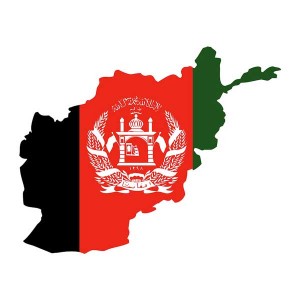
01/20/2012 There is widespread international support for reintegrating lower-level Taliban foot soldiers who may have joined the insurgency for money or other non-ideological reasons.
Inducing many of these “accidental guerrillas” to leave the insurgency is a reasonable goal since neither the Afghan government nor its foreign backers expect to kill or capture them all in battle. The hope is that they might be induced to desert in return for suitable compensation as well as under the pressure from their relatives and community.
The Afghan government has recently been running TV commercials claiming that some 800 former Taliban fighters have recently defected and returned to peaceful civilian occupations. According to Admiral Jim Stavridis, head of European Command and NATO’s Supreme Allied Commander, the Afghan Peace and Reintegration Program has processed almost 3,000 Taliban guerrillas who have renounced violence and reintegrated back into Afghanistan’s civilian society. But even if these figures are accurate, then at most one-tenth of the Taliban’s order of battle have defected, less than hoped for by either the Afghan government or its foreign backers given all the time and resources allocated to the reintegration programs.

Despite some popular misunderstandings, reintegration involves more than simply giving Taliban members money to cease fighting, which would be a terrific recruiting tool for the insurgents since almost everyone would join their ranks to be in a position to then get paid to defect. Rather, the reintegration process involves providing jobs, vocational training, housing, and other benefits that would allow rank-and-file Taliban insurgents to make a better living than they do now as hired fighters.
Several problems have impeded the effectiveness of the reintegration effort, but the main hindrance is the limited capacity of Afghan government institutions.
The Afghan National Army is not strong enough to pressure many Taliban soldiers to defect or guarantee their safety if they do. In addition, the government’s civilian institutions are unable to generate adequate legitimate employment or curb some of the social abuses, such as corruption, that lead people to take up arms in protest.
At the July 2010 Kabul Conference, the international community formally authorized the Afghan government to lead the Afghanistan Peace and Reintegration Program (APRP) and draw on the funds provided to the Peace and Reconciliation Trust Fund, with the UN Development Program Afghanistan providing operational support and channeling the financial resources to national APRP programs led by different Afghan government ministries. Yet it was not until September 2010 that the Japanese government’s made the first donor contribution to the UNDP Window of the APRP Trust Fund.
The Afghan government’s initial reintegration plan for lower-level Taliban deserters is to place these ex-fighters first in demobilization centers, where they are “de-radicalized” through special classes modeled after those employed in Saudi Arabia and other procedures. They also receive occupational training in preparation for employment in such fields as construction, farming, tailoring, electrical repairs, and other jobs requiring minimal training and education. For example, the former fighters can build highways, irrigation networks, and other major public infrastructure projects. The government also pays these ex-guerrillas to help respond to natural disasters, such as floods. The High Peace Council, the Afghan body authorized to decide policy toward Taliban members, oversees this reintegration process.
Some of the former fighters have been allowed to enroll in the Afghan National Army, Army National Police, and even community-based militias. The risk is that these fighters might rejoin the Taliban again after receiving government-funded training and weapons. Alternately, the militias could reinforce local warlords by placing these experienced fighters under the command of regional elites who rely on force to exploit their local communities. Former Taliban defectors are supposed to receive a biometric identification card, with the data shared with the Afghan authorities to discourage ex-fighters from rejoining the insurgency or attempting to reintegrate multiple times to receive additional benefits.
The U.S. military had started its own reintegration initiative months earlier by closing some detention centers in Afghanistan—including the feared and overcrowded facility at Bagram Air Base, where the malign conditions were further radicalizing inmates—and transforming others by offering basic education, religious instruction by moderate teachers, and training in various occupational technical skills to detainees in preparation to their possible reintegration. The program’s presumption is that an effort should be made to reintegrate all but the most hardened fighters into their communities. Those individuals who seem ready to cease fighting are then released to their communities, where at public ceremonies they pledge to relatives and village elders that they will cease fighting. The Pentagon transferred the detainee release program to the control of the Afghan government, which is creating tribal councils and review boards that would work with local communities on reintegration efforts.
Reintegration requires overcoming several major hurdles that have undermined past efforts to remove and keep Taliban fighters off the battlefield. The Afghan authorities must be able to protect ex-fighters from reprisals from either their former government adversaries or their previous Taliban partners, find them suitable alternative employment, and guard against rewarding defectors so greatly that those who remained loyal become angered that their fidelity was not rewarded.
The problem is that, in Afghanistan, government institutions have frequently proved unable to accomplish these goals of protecting Taliban defectors from reprisals, finding suitable alternative employment for the former fighters, and avoiding the alienation of loyal supporters in the process.
Years of fighting have left Afghan public institutions so weak that they will find it a challenge to either entice many Taliban fighters to defect or to keep them sufficiently satisfied afterwards that they do not rejoin the insurgency.
Neither the Afghan National Army nor the Afghan National Police has been capable of defending Taliban defectors from attacks from their former guerrilla colleagues seeking revenge or from Taliban haters who still consider the ex-fighters their enemy despite their having switched sides. They have also proved unable to prevent Taliban fighters from marrying locally and embedding themselves within local business and other institutions.
In addition, Afghan civilian institutions, at the local as well as the federal level, have proven inefficient at converting foreign funding into jobs, housing, and the other enticements to provide the incentives and address the grievances that would keep some ex-guerrillas from returning to their previous occupation. Afghan civilian institutions, whether in Kabul or the provinces, lack the resources and other capabilities to ensure the delivery of essential public services, including justice as well as jobs.
Furthermore, according to Kai Eide, the previous UN Special Representative to Afghanistan, one reason the Taliban insurgency had rebounded throughout Afghanistan is that military priorities have determined international development efforts. Foreign aid flows primarily to the violent southern provinces, breeding resentment elsewhere among communities that have stayed loyal to the government, rather than being more evenly distributed across the country. Although the Afghan government has had little responsibility for most foreign aid going to opposition rather than pro-government regions, it has suffered from the resulting alienation among previous loyal communities.
Unfortunately, the more immediate problem is that foreign aid to Afghanistan is declining.
In November 2011, the State Department announced that U.S. development assistance would decline in parallel with the decrease in the number of American soldiers in Afghanistan. U.S. civilian aid has already been in decline, falling from $4.1 billion in 2010 to $2.5 billion in 2011.
Western-supported reintegration projects, many of which will be funded by U.S. military commanders in their localities, will need to encourage Taliban resettlement, employment, and other opportunities throughout Afghanistan. Relocating Taliban defectors to localities where they were not involved in fighting could also decrease their vulnerability to retribution by their former comrades-in-arms. But some areas would not work. For example, putting ethnic Pashtuns among ethnic Tajiks in the northern part of the country would be asking for trouble since they are some of the Taliban’s strongest opponents and have been the most uncomfortable about agreeing to a peace agreement with the Taliban.
Pervasive public corruption has contributed to this resource paucity by diluting the impact of international financial assistance. In addition, the corruption discourages some foreign governments from rendering generous aid, while leading other to funnel whatever assistance they do provide directly to local structures, such as tribal bodies and non-governmental organizations. Bypassing the Afghan national government in this way does not contribute, and often adversely affects, the goal of building Afghan state capacity.
Furthermore, these independent groups suffer from their own capacity and corruption problems. Karzai has come under pressure by war-weary foreign governments to make progress, through domestic reforms and capacity-building programs, in strengthening his government’s effectiveness, both against the insurgents and at delivering the essential public services needed to sustain popular backing.
Some progress has been made on the military front. NATO has been engaged in the extensive training of the Afghan Nation Army. But further work is needed to teach the Afghans such skills as infantry fighting, communications, gunnery, engineering, weapons maintenance, and logistics. The Afghan National Police needs even more extensive help before it can fulfill its important mission of preventing the Taliban from returning to areas conquered by the Afghan Army. It does not help if the Army clears the Taliban from a locality but the police cannot hold it. The police is also supposed to provide intelligence on Taliban activity in their locality.
The December 2011 Bonn conference was designed to help improve the Afghan government’s institutions as NATO military forces continue to transition and withdrawal. An important focus was to strengthen Afghan public administration, the rule of law, and anti-corruption measures. But Pakistan’s decision to boycott the conference in retaliation for the NATO air strike on its soldiers on November 26 detracted from much of its value.
Feature Image Credit: Bigstock

